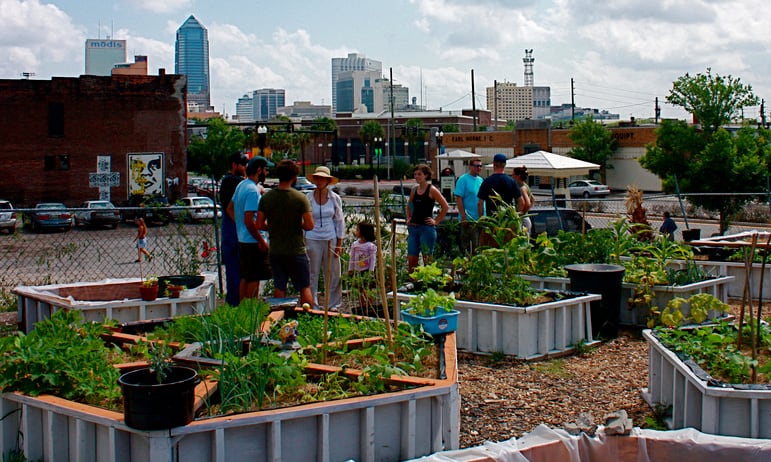City Blooming Things To Know Before You Get This
Table of ContentsHow City Blooming can Save You Time, Stress, and Money.Some Of City BloomingThe Main Principles Of City Blooming What Does City Blooming Do?A Biased View of City Blooming
Interested in expanding food for sale in the City of Chicago? Below is a list of often asked questions relating to the regulations and regulations that growers ought to think about when planning an urban agriculture project.
The zoning modification does not customize any type of various other codes handling composting, structure permits, purchasing or leasing City possessed building, organization licenses or environmental contamination. There are existing codes that regulate these issues and they continue to be in complete effect and may be applicable to your project. Area gardens are generally had or taken care of by public entities, civic organizations or community-based organizations and kept by volunteers.
Urban ranches grow food that is intended to be offered, either on a nonprofit or for-profit basis. Due to their commercial objective, city ranches require a business permit.
The Main Principles Of City Blooming
Composting is allowed however just for plant material that is produced and utilized on website. The amount of compost product can not surpass 25 cubic lawns at any given time according to the standards in 7-28-715 of the City's Municipal Code. Yes. Since the soil at most brand-new garden sites needs modifying, compost, soil, wood chips, or other products can be obtained to create or enhance the growing space - eco-friendly practices.

If a building authorization is called for after that the hoophouse will be considered an accessory structure. You can figure out even more about the building license demands by contacting the Division of Structures. The 25,000-square-foot size restriction is planned to stop a solitary community yard from controling a provided block or interfering with the block's existing household or commercial personality.
The limit does not apply to gardens found in Public Open Room (POS) districts. Can there be more than one community garden that is 25,000 square feet on a solitary block? Yes. The size limit puts on individual yards, not to private blocks. No. Fence is not called for, nonetheless, yards that have large parking lot may be required to mount fence or various other landscape design features.
City Blooming - Questions
B1 & B2 areas need that all commercial usage activities be carried out inside. Is secure fencing needed for city ranches? Fencings might be required, along with landscaping and testing, for particular car parking locations and outdoor job or storage locations depending on area and the details task taking location.
Urban farms call for building permits and zoning authorizations prior to building (balcony and patio garden design). Other forms of city testimonial may be required depending on specific structures, tasks, size, landscaping, licensing, public heath and stormwater management issues.
Yes. The kind of certificate is identified by what is taking place at the website. The Department of Company Affairs and Customer Protection can assist determine the specific type of service certificate that's called for. Yes. Off street car park is needed for most business projects in Chicago. The needed number of garage is based on the number of staff members working with website and not the square video of the expanding area.
Some Of City Blooming

Yes. A metropolitan ranch can sell garden compost material produced on website, however, the procedure has to abide by the policies in 7-28-715 of the Chicago Municipal Code. Yes. Aquaponic systems are enabled indoors on city farms in numerous zoning areas. However, a zoning review and structure authorization is required in order to set up structures or systems and a service license is required as explained above.
As much as 5 hives or nests of honey may be kept as an accessory use. However, beekeepers should sign up with the Illinois Department of Farming. For additional information about the suggested zoning change you might call the Division of Real Estate and Economic Growth, Bureau of Planning and discover this Zoning at 312.744.8563.
Farming in cities and urban locations A metropolitan farm in Chicago. Urban farming describes numerous practices of growing. https://www.brownbook.net/business/52834376/city-blooming/, handling, and distributing food in urban areas. The term likewise relates to the area activities of animal husbandry, tank farming, beekeeping, and cultivation in a metropolitan context. Urban farming is differentiated from peri-urban farming, which happens in country locations at the edge of suburban areas.
Our City Blooming Diaries
It can include an activity of natural cultivators, "foodies" and "locavores", that seek to create social networks based on a common values of nature and area holism. These networks can develop by method of formal institutional support, ending up being incorporated into neighborhood community preparation as a "transition community" activity for lasting metropolitan growth.
The a lot more straight access to fresh veggie, fruit, and meat products that might be realised with urban farming can enhance food protection and food security while reducing food miles, resulting in lower greenhouse gas exhausts, thus adding to climate adjustment mitigation. Several of the very first proof of metropolitan agriculture comes from Mesopotamia.